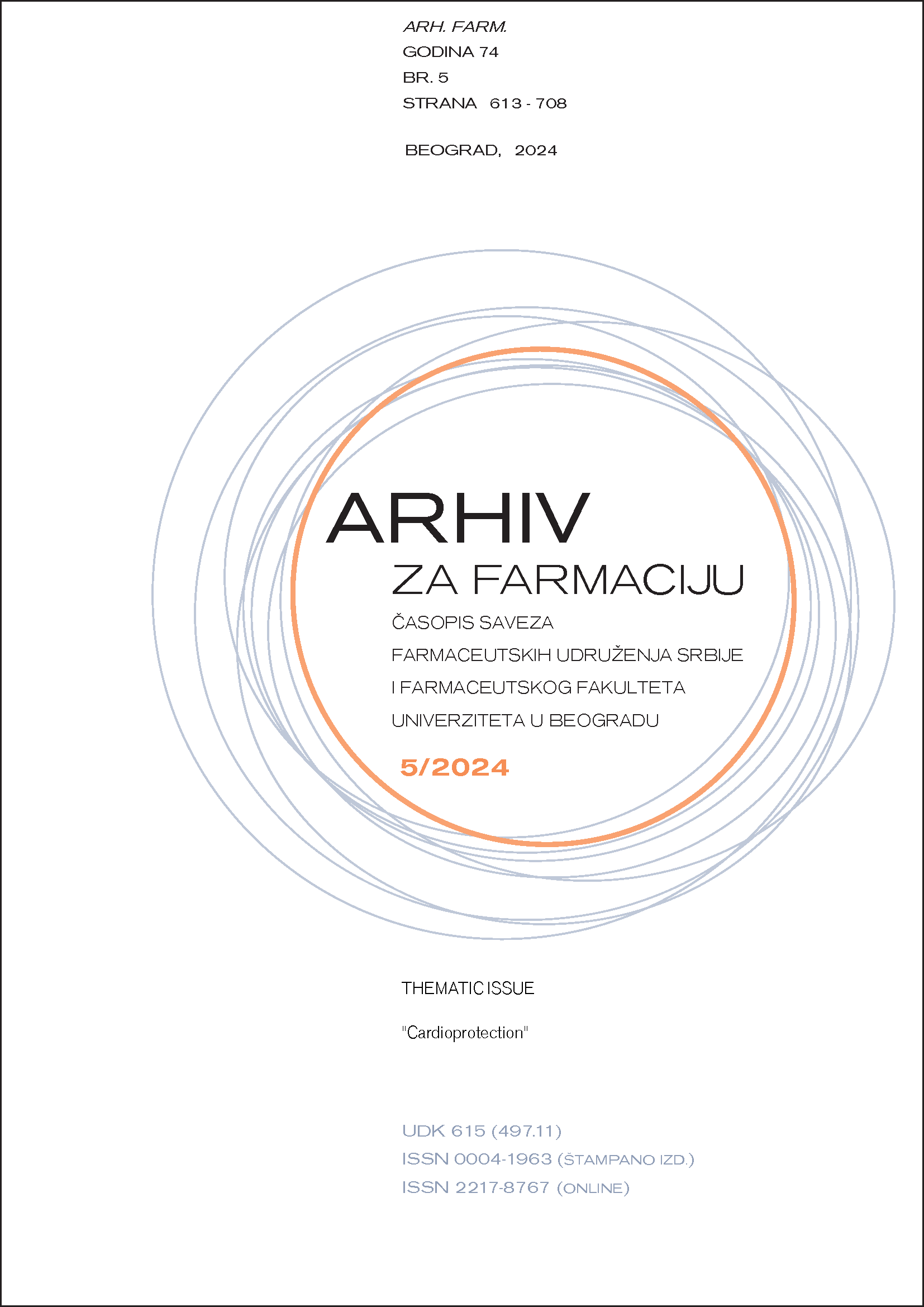Aktuelni broj

A Word from the Guest Editor
Cardiovascular diseases remain one of the main causes of morbidity and mortality globally, underlining the urgent need for innovative strategies to protect and preserve heart health. Cardioprotection, defined as the heart's intrinsic ability to withstand and recover from various challenges, such as ischemia-reperfusion (I/R) injury and other metabolic stresses, is a critical area of research with potentially significant clinical implications. This special issue of Archives of Pharmacy, titled “Cardioprotection,” brings together a collection of six papers that elucidate the complex mechanisms and therapeutic approaches focused on increasing the heart's resistance toward metabolic stresses.
“A Brief Overview of Cardioprotective Signaling” introduces the intracellular signaling pathways underlying cardioprotection. It explores key players such as the RISK and SAFE pathways, hypoxia-inducible factors, KATP channels, microRNAs, and Connexin 43, emphasizing their roles in activating protective genes, regulating ion homeostasis, enhancing mitochondrial function, and regulating protein expression. This overview sets the stage for understanding the complex network of signals that confer resistance against various challenges on the myocardium.
“KATP Channels and Cardioprotection” focuses on ATP-sensitive potassium channels, which couple cellular energy metabolism with sarcolemmal electrical activity. This review elucidates how KATP channels respond to metabolic stress by maintaining membrane potential and preventing calcium overload, thereby protecting the heart from injury. The discussion on the therapeutic potential of KATP channel modulators highlights both the promise and the challenges of developing targeted treatments for ischemic heart disease.
“Hypoxia and Cardioprotection: A Review” examines the potential therapeutic role of hypoxia in cardiac health. While chronic hypoxia can lead to detrimental cardiac remodeling and dysfunction, short-term or intermittent hypoxia induces cardioprotection. This paper discusses crucial signaling pathways, including HIF and ROS signaling, and strategies such as hypoxic conditioning and pharmacological activation of HIF to accomplish the protective effects of hypoxia.
“Metabolic Modulators in Cardioprotection: A Focus on Trimetazidine” explores the role of metabolic modulation in protecting the heart. By shifting cardiac metabolism from fatty acid oxidation to glucose oxidation, trimetazidine increases myocardial efficiency and reduces acidosis under ischemic conditions. This paper highlights the therapeutic benefits of trimetazidine in various cardiac conditions, emphasizing its potential as an adjunct therapy for patients inadequately managed by first-line treatments.
The potential of natural compounds in cardioprotection is the focus of the paper titled “Isosteviol: A Potential Cardioprotective Agent.” Isosteviol, derived from the Stevia rebaudiana plant, exhibits antioxidant and anti-inflammatory properties while regulating key signaling pathways such as NF-κB and PI3K/Akt. This paper stresses the need for further clinical trials to validate isosteviol’s efficacy and determine optimal dosing strategies, positioning it as a promising candidate for cardioprotective therapy.
“Nicotinamide: A Cardioprotective Form of Vitamin B3” presents nicotinamide as an agent that stimulates NAD+ biosynthesis, modulates KATP channels, and exerts anti-inflammatory and antioxidant effects. Unlike the major vitamin B3 form, nicotinic acid, nicotinamide does not adversely affect lipid profiles, which makes it a safer option for clinical use. This paper calls for randomized controlled trials to establish nicotinamide’s role in cardioprotection, underlining its potential for rapid introduction into clinical practice given its established safety profile.
This special issue encapsulates the scope of current research in cardioprotection, from signaling mechanisms to potential therapeutic interventions. The interdisciplinary nature of the contributions not only advances our understanding of cardioprotective strategies, but also bridges the gap between basic research and clinical application. By focusing on both established signaling pathways and developing therapeutic agents, these papers collectively highlight innovative approaches to promoting heart health.
I extend my gratitude to all the contributing authors for their work and dedication to advancing the field of cardioprotection. Additionally, I would like to thank the editorial team of Archives of Pharmacy, led by Prof. Radica Stepanović-Petrović, Editor-in-Chief, for their support in bringing this special issue to fruition.
Together, we can develop more effective strategies to promote heart health, ultimately improving the quality of life for those affected by cardiovascular diseases.
Guest Editor, Special Issue on Cardioprotection
Aleksandar Jovanović, MD, PhD, Professor
University of Nicosia – Medical School
Department of Basic and Clinical Sciences
